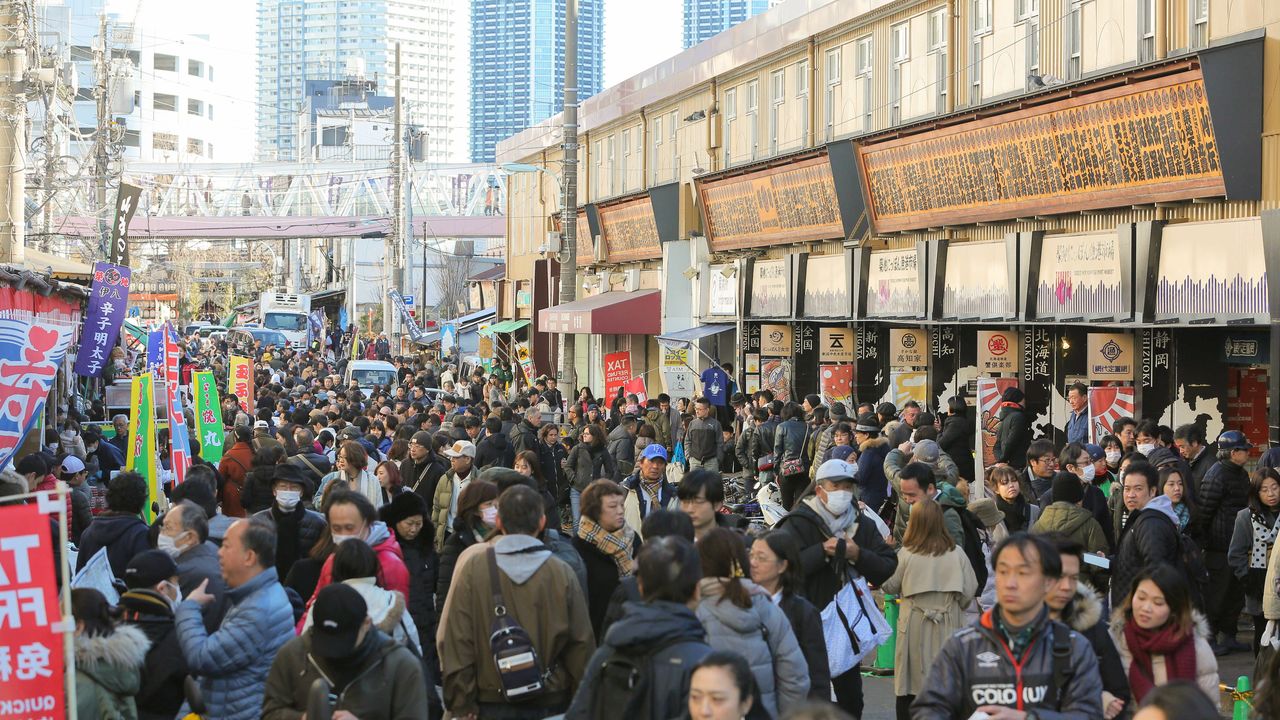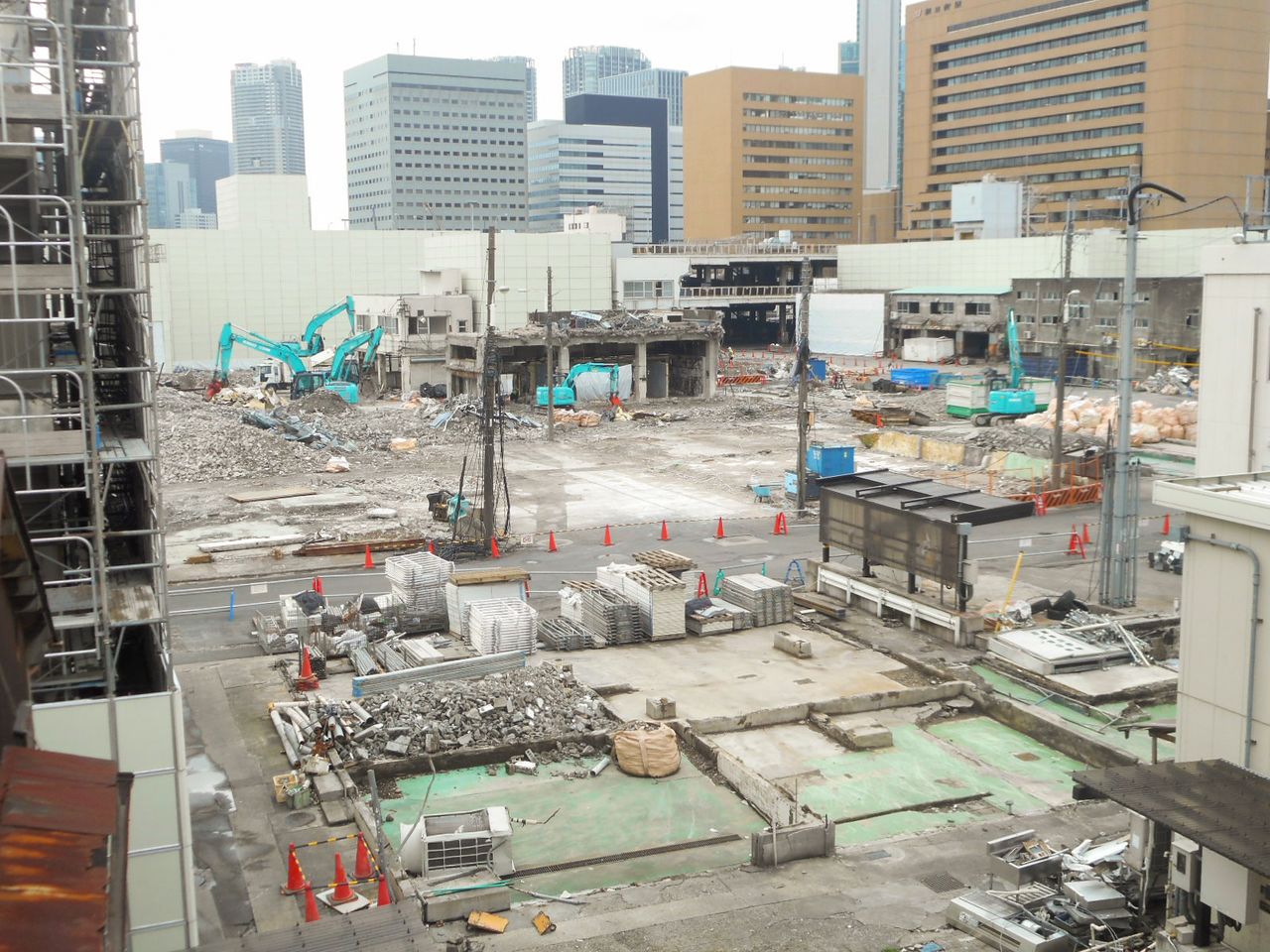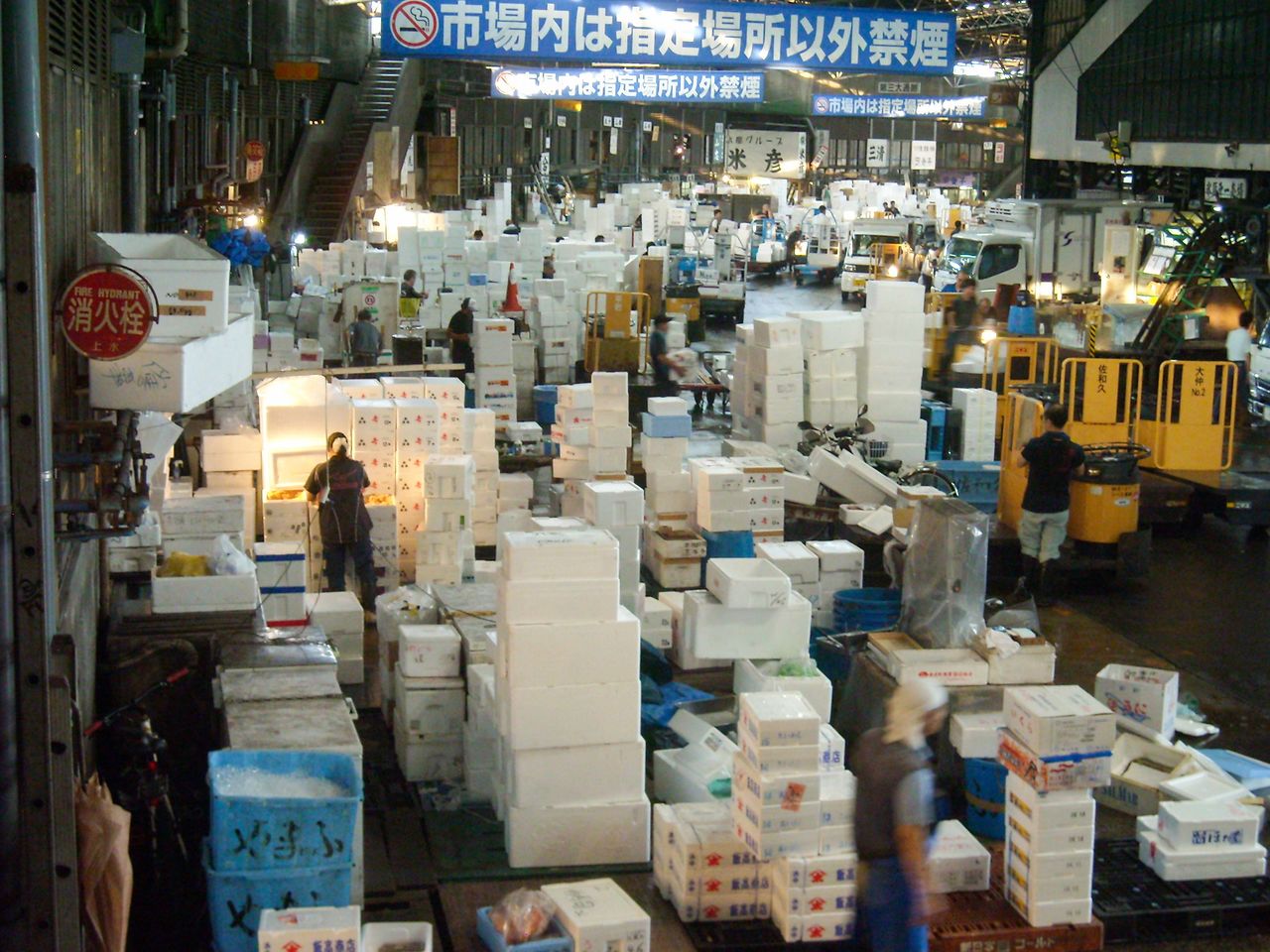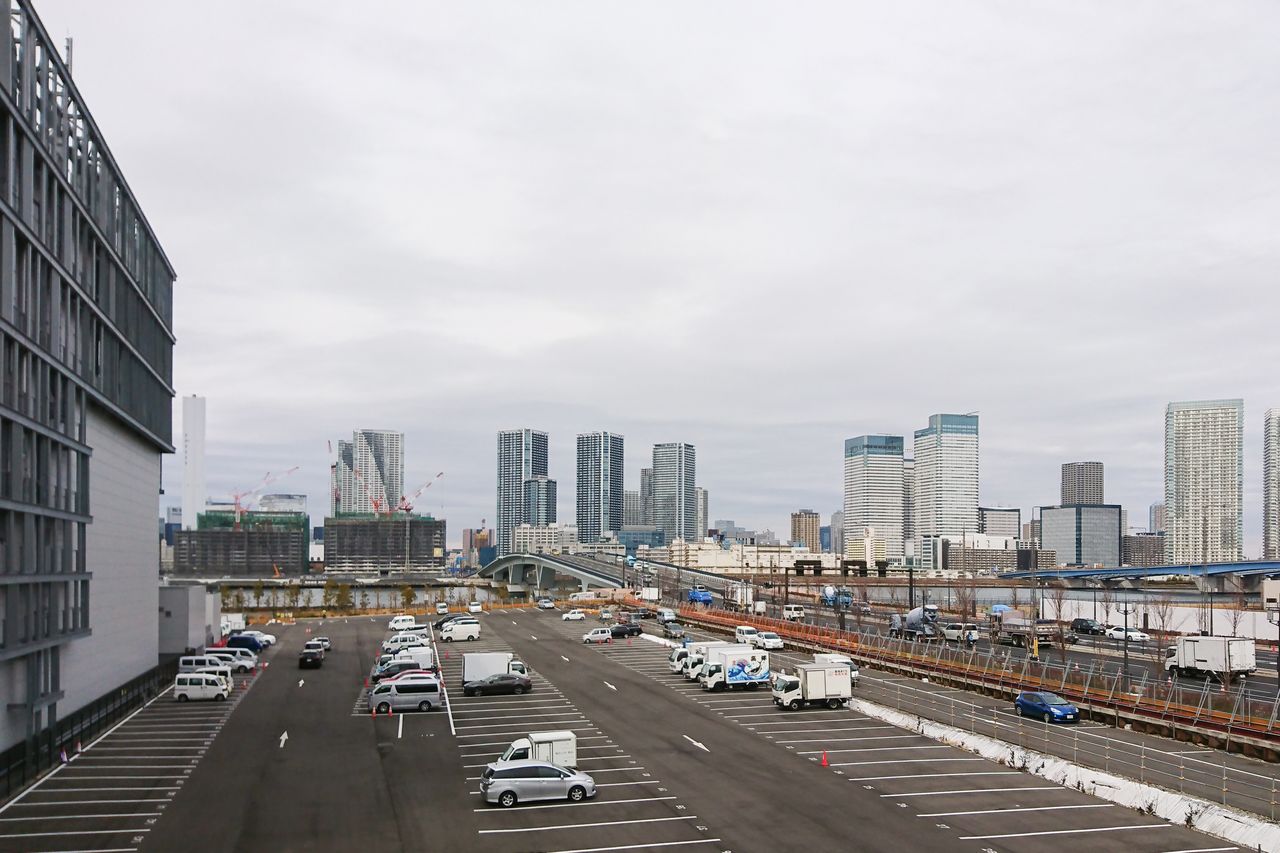
The Future of Tsukiji’s Food Culture
Economy Society- English
- 日本語
- 简体字
- 繁體字
- Français
- Español
- العربية
- Русский
The Toyosu wholesale market has been doing brisk business since moving from Tsukiji in October 2018. The metropolitan government has big plans for the old market and recently announced a project to build an international convention center on the site that will also serve as a center for food culture, injecting new vitality and attracting new customers to the area. However, to the dismay of many, the scope of redevelopment is a far cry from Governor Koike’s initial promise to build a food-related theme park with market functions.
Broken Promises?
The market’s move was initially postponed due to the discovery of contaminated soil at the Toyosu site. In June 2017, with an election for Tokyo municipal assembly members in the offing, Governor Koike came under fire for being wishy-washy on the market relocation issue, forcing her to publicly reaffirm that the relocation would go ahead. The metropolitan government later announced that the market would move following further decontamination work and pending approval of the agriculture minister.
At the same time, to mollify parties opposed to Toyosu, Koike pledged to protect Tsukiji with her plan for the food-related theme park, calling the site “a treasure for Tokyo.”
On a previous visit to Tsukiji, Koike, speaking to intermediate wholesalers and other market traders, boasted the market had grown into a world-renowned brand thanks to the knowledge and expertise of the people who worked there. She proclaimed that Tsukiji’s spirit had earned it a place in history and that this spirit could not be extinguished by the move to Toyosu. She then unveiled a plan for twin markets, putting to rest disagreement over the move. But this plan turned out to be little more than lip service intended to placate intermediate wholesalers vigorously opposed to leaving Tsukiji.
Not only did Governor Koike pledge to rebuild the Tsukiji site, at the press conference announcing the move to Toyosu, she promised to help those intermediate wholesalers who believed they could only stay in business if they were based at Tsukiji to return, assuring them that it would retain some part of its market function. In addition, to restore trust in the metropolitan government, she declared she would create a forum for market traders and Tokyo residents to promote open discussion of issues relating to Tsukiji.
After Koike succeeded in quelling uncertainty over the market’s relocation, her party Tomin First no Kai (Tokyoites First) won a landslide victory in the Tokyo assembly election. Even so, Koike failed to reach a final decision on the use of the Tsukiji site and developments moved in a direction contrary to Tsukiji supporters’ expectations.

Demolition work at the site of the Tsukiji market in March 2019.
Promoting Food Culture at Tsukiji
In autumn 2017 the metropolitan government appointed a panel to map out a basic policy on Tsukiji’s redevelopment. However, the committee did not include a single person operating a business at Tsukiji. An official from an intermediate wholesalers group now doing business at Toyosu related that his organization had pushed for representatives from Tsukiji to be included on the panel, but the metropolitan government brushed the request aside and merely replied that the group would be kept informed of the discussions.
Talks over the fate of Tsukiji progressed without any business at the market having a say in the discussion. In May 2018 the panel concluded its study with the vague recommendation to develop Tsukiji and Toyosu in a mutually viable way. Based on this recommendation, the metropolitan government plans after the 2020 Tokyo Olympics and Paralympics, when Tsukiji will serve as a transport hub, to develop the former market site in stages. Taking into account the site’s proximity to other local assets such as the Hamarikyū Gardens and the Sumida River, redevelopment will focus on projecting a progressive, international image of Tokyo.
While the proposal revolves around Tsukiji’s historical and cultural background and its role in Japan’s food culture, there are no plans to restore Tsukiji’s function as a wholesale fish market. This was not the outcome that businesses at Tsukiji had hoped for. With zero prospects for reviving the market, Liberal Democratic Party members of the Tokyo assembly expressed dismay at Koike’s betrayal. Some intermediate wholesalers who had moved their businesses to Toyosu also voiced anger at the governor.
Koike maintains that her remarks on keeping some market functions at Tsukiji were made in the context of building on Tsukiji’s food culture and that the basic concept she unveiled when the move to Toyosu was formally announced remains unchanged.
Fish traders and many intermediate wholesalers are no longer interested in returning to Tsukiji. Satisfied that soil contamination at Toyosu has been dealt with, one veteran intermediate wholesaler put it this way: “Now that everyone is settled in, there’s no way that a fish market will be set up at Tsukiji again.” Like many others, he has made his peace with the move and is now focused on his business at the new location in Toyosu.
It will be interesting as further details of the Tsukiji redevelopment plan emerge to see what the metropolitan government has in mind for recreating the market’s food culture. Tsukiji was a center for a multitude of seafood products, from fresh, top-of-the-line fish to everyday fare. It appealed to epicures and gourmands alike, and the market’s discerning professionals could be seen eyeing the best fish, preparing and packaging it, and sending it on its way to the kitchens and restaurants around the nation. People and goods mixed together, almost chaotically so, creating a dynamic food culture whose energy rippled far and wide.

Lively trading in the early morning hours at the former Tsukiji market.
Plans for a Tourist Facility at Toyosu Up in the Air
The nearly 500 shops in Tsukiji’s outer market have reported a fall in trade after the wholesale market’s move to Toyosu. Many business owners hope that redevelopment plans for Tsukiji will include not just an international conference center but also emphasize the area’s food culture. Such a focus would allow visitors to Tsukiji to enjoy new food experiences while allowing vendors to prosper again.
Several ideas for the former Tsukiji market site have been proposed, including a sports stadium and a casino. However, there is no guarantee that even if the metropolitan government’s final plan for the site combines uses complementary to Toyosu that the proposal will not meet strong disapproval.
Meanwhile, emphasis on food culture at a redeveloped Tsukiji market may affect the future of the Senkyaku Banrai tourist center planned for Toyosu. Hospitality company Manyō Club, slated to operate restaurants and gift shops there, has long been wary of potential competition from a reborn Tsukiji. If the public flocks to the old market, the facility at Toyosu might not live up to the expectations of planners. After negotiations with the metropolitan government, Manyō Club has agreed to break ground for Senkyaku Banrai after the 2020 Olympics, but this may change, depending on how plans for Tsukiji evolve.
Relocation to Toyosu was largely uneventful, but Tsukiji redevelopment faces a rocky road. The project to shift the iconic Tsukiji market to Toyosu remains a work in progress.

The site of the future Senkyaku Banrai tourist center, next to the Fisheries Intermediate Wholesale Market at Toyosu.
(Originally published in Japanese. Banner photo: Crowds throng the Tsukiji market’s outer market for yearend shopping in 2018. © Jiji. All photos by the author except where noted.)
food Koike Yuriko Tsukiji Toyosu Market fish fisheries market